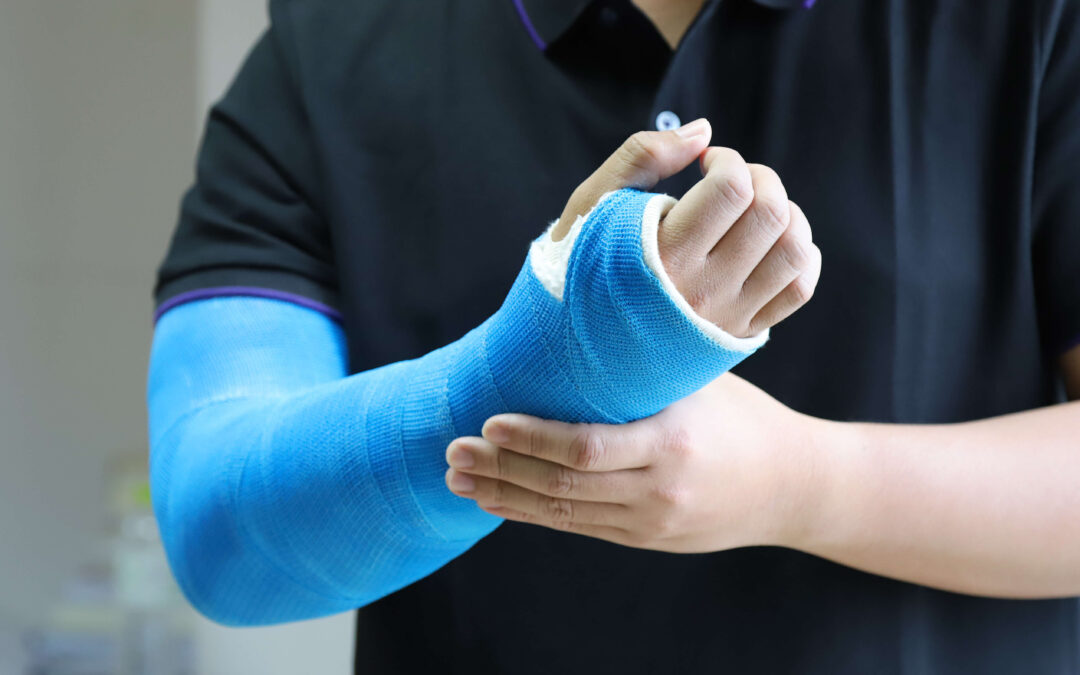A broken bone or fracture can be painful, especially if it moves. Often the recommended treatment is a cast. A cast allows the bone to be aligned correctly and prevents the fracture from moving out of place until it is healed. Casts are typically worn for approximately 4-8 weeks depending on the type of fracture. During this time, it is advised that the patient refrain from gym and most sports and not apply any weight to the casted extremity, unless specifically allowed to by his or her provider.
There are two important rules to a cast. The first rule is do not allow it to get wet, and the second rule is nothing can be put down the cast. If either of these occur, it is important to contact the provider so that the cast can be changed.
Moisture can weaken the cast. If the padding of the cast, which is usually cotton, gets wet, it can irritate the underlying skin resulting in a rash or breakdown. To prevent the cast from getting wet, it is recommended that a cast cover or plastic bag be used to shield the cast while bathing. Even with waterproof protection, never submerge a cast in water. Sometimes, this can be difficult for children or an elderly individual, so an alternative may be to utilize sponge baths until the cast is removed.
The skin under the cast is vulnerable and can be easily irritated. For that reason, it is important that nothing goes down or inside the cast. No pencils, food crumbs, bingo chips, etc., because it can cause friction and skin breakdown that we cannot see. Avoid dirt, powder, and sand from getting inside the cast. Do not squirt creams or lotions inside the cast to soothe itching.
The cotton padding inside and along the edges of the cast is intended to protect the skin and provide cushioning. Do not pull at or remove the padding. Also, inspect the skin and cast regularly. If the skin becomes red or raw, or if the cast cracks or develops soft spots, contact your doctor or physician assistant.
5 Cast Red Flags
If you believe you are having a problem with your cast, do not attempt to remove the cast by yourself, as you may cut your skin or prevent the fracture from healing correctly. If any of the below occur, please contact the provider immediately to determine if a recheck is necessary:
- Numbness or tingling of casted extremity
- Burning or stinging under the cast
- Severe swelling of fingers or toes of casted extremity
- Inability to move fingers or toes of casted extremity
- Pain is getting worse
After the cast is applied, it is likely that the extremity will still be swollen, which is normal. However, there are ways to help reduce the swelling. This includes elevation or propping the injured arm or leg on a few pillows so that it is above one’s heart. Icing the fingers or toes can also help, just remember not to let the cast get wet!
While it may take time to adjust to having a cast, it is often a preferred way to heal a fracture without surgery. If you have questions or concerns about your cast, please don’t hesitate to contact
us.

Kathryn O’Brien, PA-C
Kathryn O’Brien is a current member of The American Academy of Physician Assistants and The National Commission on Certification of Physician Assistants.
